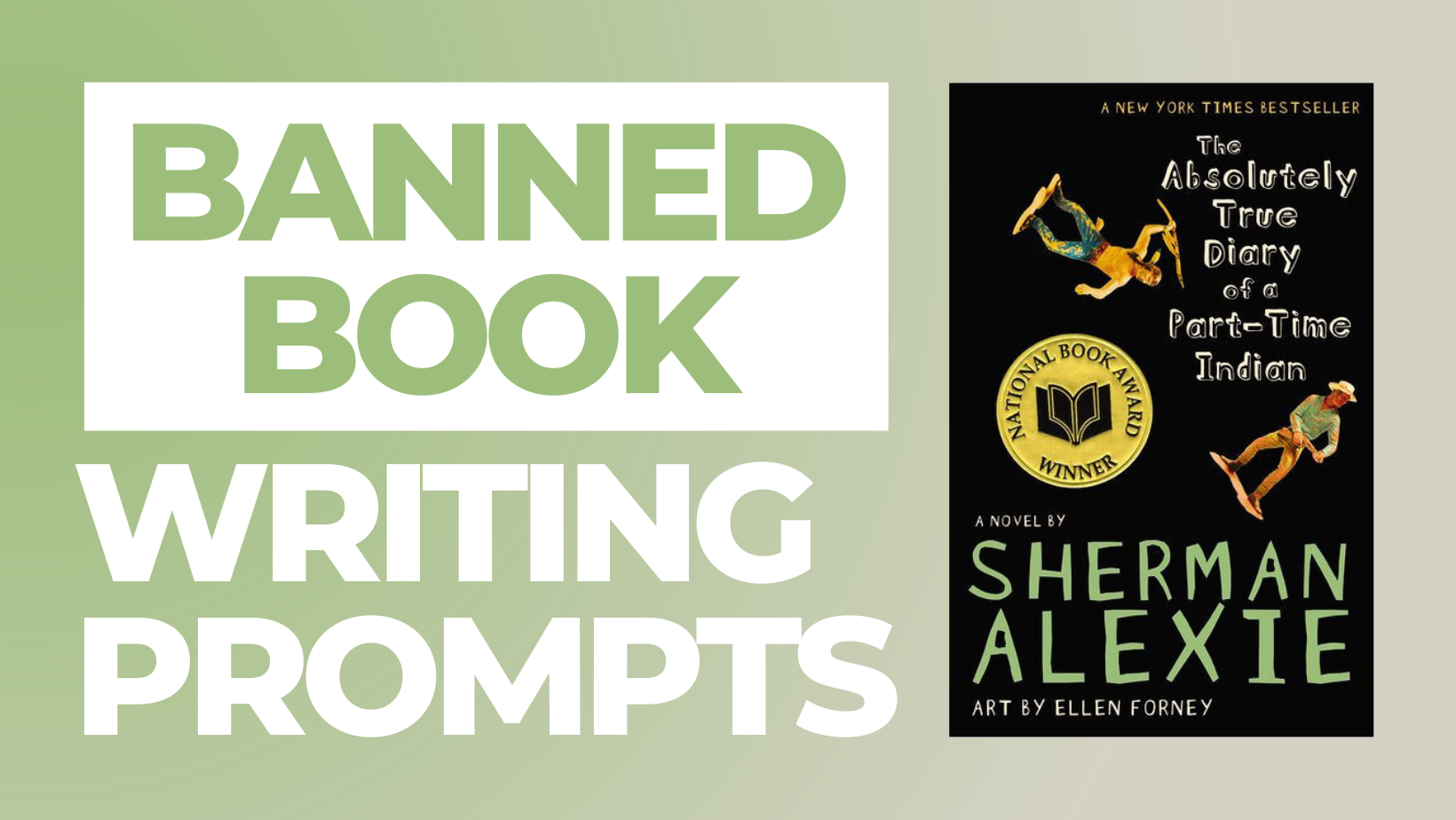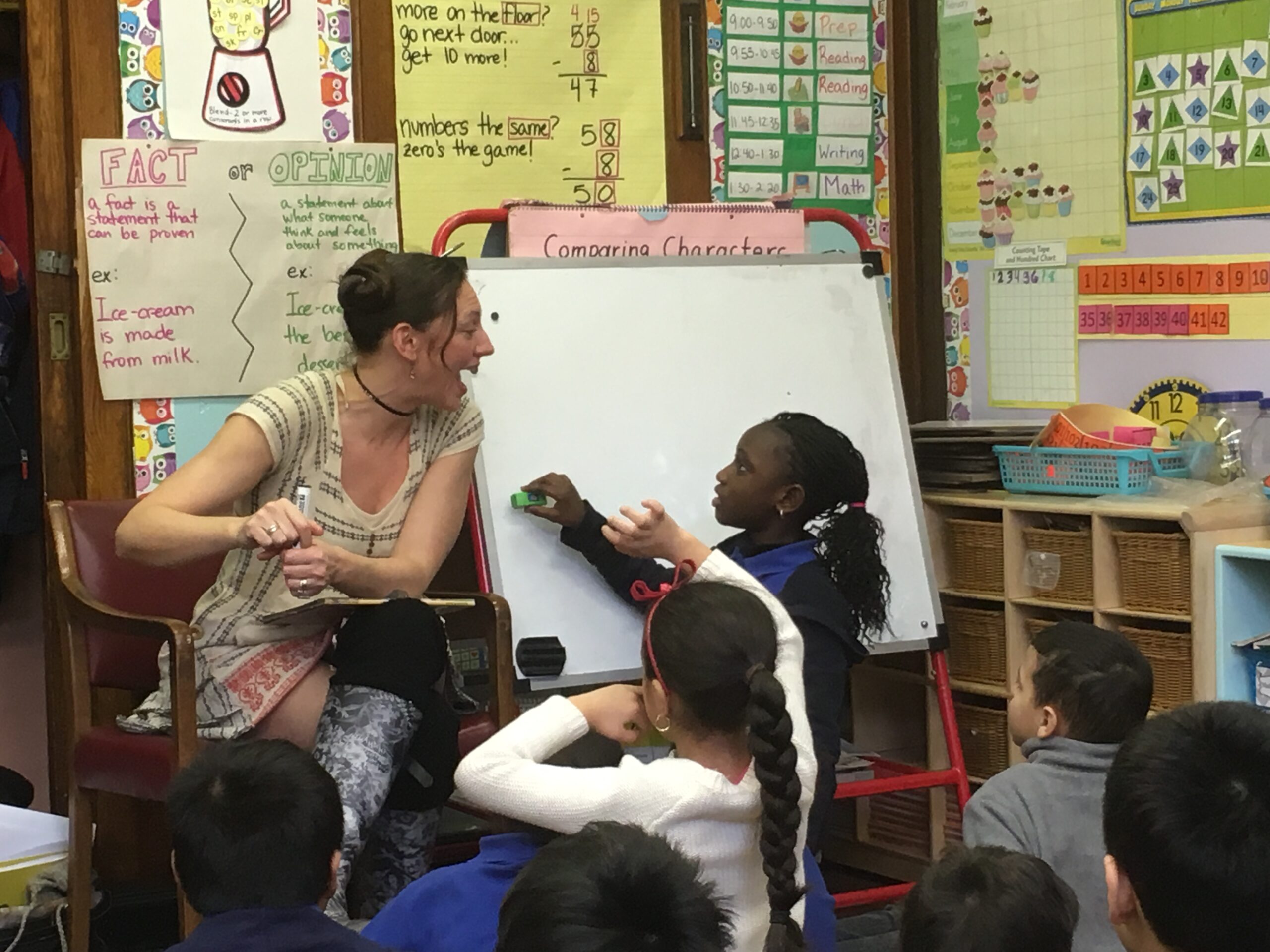I moved to South Dakota’s Pine Ridge Indian Reservation in 2009 as a naïve 22-year-old teacher, with high hopes and big plans to instill my love of writing in my 80 incoming middle school students.
My principal informed me there was no formal writing curriculum—I would have to create one from scratch.
I quickly ditched the idea of throwing together anything from the materials in the two creaky roller carts in my classroom: a class set of dog-eared red Merriam-Webster dictionaries and an 80-year-old set of Houghton Mifflin grammar books, so scarred with gang signs and ink as to be illegible.
I paid out-of-pocket for class sets of novels, drafted long-term teaching plans, pirated resources from the school’s lethargic Internet connection. Then, I eagerly awaited my first batch of students, who I quickly learned had their own ideas about what would happen in my classroom.
They nicknamed me “Miss Tomato” on the first day of school and chose either to sleep through my class or litter my classroom floor with a confetti of spit wads and chewed gum. My first indicator that my students could write, with enjoyment and from their own free will, came on the second day of school, when I was chastised by my principal.
“There was graffiti found in the girl’s bathroom,” she announced, at an “emergency” after-school meeting. “We’re on Day 2, people, and I just read the kids the Riot Act this morning. We need to nip this behavior in the bud.”
My principal dismissed the other teachers. She kept me behind. “Alexa,” she said. “Which one of your female students used the bathroom today?” I asked how she knew the culprit was one of my students. My principal held up the incriminating green pencil stub, found in a stall. “I gave each teacher a different color of pencil,” she explained. “Yours are green.”
Students at my school were not expected—nor allowed— to bring any supplies from home; the school provided folders, pencils, paper, and journals. The reservation school was located smack-dab in Shannon County, the poorest county in the United States. In the village community where I taught, 97 percent of families lived below the federal poverty line and families averaged a yearly $4,000 income.
The overarching school environment stressed almost militaristic discipline and control. I knew the school’s strict rules were an attempt to provide my students with the structure that many lacked in their home lives and needed to succeed academically. But I worried that imposing overly rigid guidelines in my writing class would rob my students of their creativity. Into this atmosphere, I introduced the smallest modicum of freedom and choice.
I told my students they needed to write a page each day; but what they chose to write was up to them.
Micco Brave Dog, a 12-year-old seventh-grader, liked to write little stories featuring indigenous protagonists for his required page-long journal entries. In one such story, which he titled “From Abandonment to Independence,” he wrote the life story of a 10-year-old Native girl named Tatunka’win.
Tatunka’win lives in Lame Deer, Montana. Tatunka’win parents died in a automobile accident. She was 10 years old. Since the accident she lived with relatives all over the reservation. Her relatives are all abuse and alcohol. Tatunka’win is now in the 7th grade and she is 14 years old. She has very little support from her relatives but they all want her disability and social security checks for drugs and alcohol. Her relatives drink up her money every month. Then one day Tatunka’win met a nice lady who offered her a nice place for teen girls. Tatunka’win use the court system and move into the girls home. She had her own room, and was able to save her money and learn independence.
Their classroom journal entries were how I came to know them—to really know them— and to see beyond their misbehaviors to the trauma they wore like badges of honor.
One of my students, named Cetan “Hawk” Little Thunder, was an eighth-grader who read and wrote on a second-grade level, but whose intense blue-grey eyes followed every motion of my dry erase marker, as if he wished he could absorb the scrawls through intention alone. My principal had told me that the Little Thunders were a “rough” family: Hawk’s parents were in and out of jail, his older brother had joined a gang, and his sister already had dropped out of high school. “He may be the only one in his family who has a chance,” my principal said. “He wants something more for his life, and he knows education is the only way he’ll get off the reservation.”
Hawk wrote in his journal:
miss talamo i am so tird of death death all around me everywhere i turn i cannot escape it and i am so afraid so afraid i will lose to death.
I knew about the reservation’s high death rate and low life expectancy (at 48 for men and 52 for women, the lowest in the Western Hemisphere besides Haiti). I knew some of my students had been hit harder than others by death: Hawk, at age 13, couldn’t even count the number of his deceased friends and relatives on both hands.
Although the daily writing requirement succeeded in getting students (sometimes) to put pen to paper, other things I tried did not work as well. In the earlier grades, my students mainly were required to diagram sentences or otherwise complete drills in grammar. When their other teachers required them to write, a paragraph of a few sentences sufficed. Asking my students to write more than a paragraph, about anything, met with their blank stares or chorused shouts of “Why?” The concept of revising their writing for clarity, word choice, or organization also met with stalwart resistance.
I brainstormed ideas over the summer. I attended professional development courses at the National Writing Project. Make writing meaningful for students, my mentor advised. Give them incentives to learn. I returned for a second year with a re-vamped curriculum and my own idea for a classroom store, where students could “buy” candy, stuffed animals, cameras, or jewelry after amassing enough raffle tickets earned for attendance, class participation, completed homework, and improvement in their writing grades.
The day I introduced the classroom store, Keya Walks Out—a 16-year-old seventh-grader interested only in the American Indian Movement— snickered. “What am I going to do with a pink stuffed bear?” he asked me. I knew Keya was fiercely protective of his younger sisters; I asked if he could earn prizes for his sisters. “I guess,” he replied, and put his head back down on the desk.
Later that evening, I paused over Keya’s submitted writing assignment for the day. I had assigned the students to write an “I Don’t Understand” poem, and Keya had written two sentences, across a single line:
I don’t understand why I am here on this earth. I don’t understand why God made this mistake.
The classroom store, for students like Keya, wasn’t going to cut it, either. I had a breakthrough with Keya only by accident, when my principal put me in charge of preparing students for a county-wide speech competition. Eager for a chance to miss a day of school, Keya volunteered—for the first time in my history with him—to join the team.
I let him write an expository speech about Russell Means, an Oglala Lakota activist who championed the rights of indigenous people. I was surprised by how seriously Keya took his writing. On the day of the speech competition, he brought home a second-place finish—and, for a very brief moment, he gave me a smile.
Keya’s victory made several things immediately clear to me: my students needed to experience success. They needed to write about what they loved. And they needed to see that their writing could impact a broader audience than the one held captive each day between the four walls of my classroom.
I decided I needed to celebrate my students’ writing, and that they needed to celebrate each other. I created a monthly newsletter featuring the students’ best writing, which they helped disseminate to each homeroom class. I also started publishing class anthologies of the students’ writing twice a year and accepted art submissions from my students to accompany the pieces.
Students used the Voices from the Middle anthology submissions to share messages of hope with each other. KF, a seventh-grade girl who often ran away from home and struggled with self-harming, used writing to convince herself and others that life was still worth living:
Life is something very special theres no reason for you to end your life you have so much to live for. God put you in this world for a reason. Why die? Life is hard at times but its part of being human. I ain’t the only one that hurts. Everybody else hurts too so no one should feel alone. Your family and friends may not show you that they care but they do deep down.
Life. What’s life? I don’t really know. I just know I am here for a reason.
Some of my students, who came from families that still practiced traditional Lakota ways and spirituality, filled their blank pages with submissions about the beauty and power of the Lakota culture. Sixth-grade student Ali wrote about the excitement she felt the first time she danced at a powwow:
The day at the powwow was the best day of my entire life because I finally got to dance. My friend and I were juniors in the jingle dress contest. It had grown quiet. The night was silent. As I was going to the powwow circle, I saw an eagle feather fall in front of me. I was like what if this means something, like a good sign?
As I walked across the powwow grounds, I could feel the beat and the heavy vibration of the drum. I quickly danced in the contest and in the intertribal, then I ran to my grandma. I felt like I needed to tell her about the eagle feather, but I didn’t. She said, “Well, are you gonna dance for us or what?”
I smiled with laughter. I said, “Well, I’m wasting my time standing here.”
She said, “Go dance for your relatives and think about how they would congratulate you.”
These anthologies—along with the students’ journals—were the only school items not discarded in the giant gray trash bins left in the middle school hallways on the last day of each school year.
Soon after the first installment of Voice from the Middle ran, a section of my students decided they wanted more time to write. They asked me to start a newspaper club. Twice a week, we gathered in my classroom for two hours after school. I brought in my coffee pot from home and four different kinds of tea; they enjoyed how seriously I served them tea and tiptoed around the room, so as not to disrupt their creative thought process.
Ghost Story Night evolved from the newspaper club. Like many middle school students, mine were obsessed with horror stories. I gave my students one hour to write; then we lit candles and turned off the lights, and the students, delighted, read their completed pieces to the shrieks and howls of the others.
Seeing how excited my newspaper club students became when they were allowed to write together or share their writing, I re-worked my approach to my writing classroom. Rather than assigning a paper, giving students time to write, and then collecting and grading their papers, I switched to a writing workshop format. Students conferenced with me twice, and with each other through peer response once, before turning in their final drafts.
The result was that they tried harder. They also enjoyed the assignments more. My students were slowly starting to see that they could find joy in writing. But I wanted them to realize writing could be more powerful than just that.
In my third year teaching, I started with a slam poetry unit. I had my students watch “Why I Hate School but Love Education” by Suli Breezy, “Pretty” by Katie Makkai, and “Thinking About You,” performed at Brave New Voices by a young man named Mike. I watched their eyes grow big.
“Can we really write about things like that?” one timid eighth-grader asked me. I told her they could, and I turned them loose. I watched them write.
Eighth-grade student Rebecca dove straight into a poem about her complicated relationship with her abusive parents:
“Taken”
You take away the finer things
You take away the air I breathe
You take away what I love
Places only I know of
You make a way that I hate
You make a way to have me forgotten
You take away from my siblings the same
You make a way, to take away
And gain to fame
You make a way five, ten, twenty
You take away all you can
And leave a wound that cannot heal
You make a way to conceal a life
Permanently, I run away with myself cause
You made me make myself this way
You take away and make a way
Take these words, pursue them
For whom I am and make it know,
That what I dream and what I feel
Can never be taken.—Rebecca
Their writing was real, raw, honest. Too good, I felt, to contain to just our classroom. I subscribed to Teen Ink, a monthly magazine written by teenagers and published by the Young Authors Foundation, and I helped my students set up online accounts. I gave them one class period each month to submit their best works—and they did so with gusto.
My students did not seem to care whether their writing was published in the magazine or not. The online postings allowed other teens to comment on my students’ submitted works. I saw, immediately, the joy they found in connecting with other teens from across the country, through their writing.
I had thought, at the start of my teaching journey, that having a degree in education, a love of writing, and a calling to work with children would have added up to instantaneous success, both for myself and my students. But it took me four years to figure out a working formula, monitoring and adjusting as I went, and, above all else, letting the students and their feedback be my best guides. Working together, my students eventually experienced the power of writing, the sense of connection that came from sharing their words with others, and an understanding that they were not alone in the struggles they faced.
Many of my students, after they graduated, came back to visit me during the school’s community events. They told me they had kept up with their Teen Ink accounts; they had joined poetry clubs (if they existed) at their high schools; they had kept up with their writing.
“I’m still writing, Miss Talamo,” many told me, without my having to ask.
“Good,” I would tell them. “So am I.”
Students’ names have been changed to protect their identities.
Lex Talamo taught middle school writing for four years on the Pine Ridge Indian Reservation and later graduated with a masters degree in investigative journalism from Arizona State University's Walter Cronkite School of Journalism. She spent three years as a government and investigations reporter in Shreveport, Louisiana, and started another investigative reporting job in Yakima, Washington, in March.



